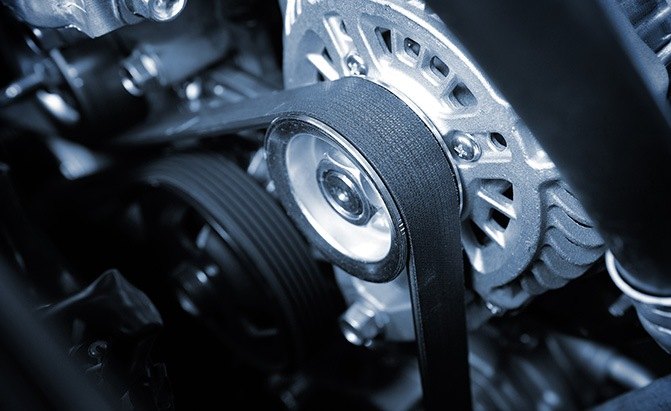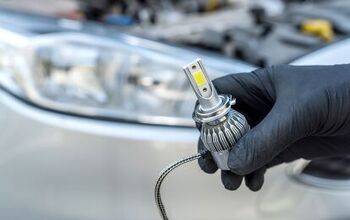Best Timing Lights to Keep Her Running Good
“Runs good!” You’ve seen that a lot of times looking at Craigslist ads for cars and motorcycles, especially older ones. But what does that even mean? Why wouldn’t it “run good,” anyways Shouldn’t every car run like it was designed to? How do you get it to do this so-called good running?
There are lots of things you need to do for an old car, motorcycle, lawnmower, or modified custom project to run properly, but you won’t be able to do many of them without a timing light. But now despair sets in—which one do you need to get? There are so many. The answer is, like any other tool, it depends on what you need it for.
If you’re looking to purchase a timing light, you’ve come to the right place. Here are some of the picks we’ve made, detailing their pros and cons to help you get on your way.
For more information on the best timing lights, refer to our table of contents.
Table of contents
- 1. Editor's Pick: MSD Ignition Timing Light
- 2. Best for Small Engines: ESI Self-Powered Timing Light
- 3. Best for High Performance Vehicles: Innova Pro-Timing Light
- 4. Best for Vintage/Classic Cars: Actron Inductive Timing Light
- 5. Best Timing Light Grandpa Would've Bought: Electronic Specialties Advance Timing Light
- 6. Best on a Budget: Ram-Pro Engine Ignition Tester
- What is a timing light?
- Why do you need a timing light?
- What to look for when shopping for a timing light:
1. Editor's Pick: MSD Ignition Timing Light
If you’re a hot-rod guy, you know the name MSD. One of the Holley family of brands, MSD’s experience with motorsports timing systems is robust. This recommendation is spendy compared to other options, and it’s pretty simple, but it’s well-made, durable, and robust. The heavy-duty chemical-resistant resin shell looks tough enough to survive a high drop, and the plug cable is detachable so you can replace a worn or damaged lead. It also includes a carrying case and one-year warranty.
Just because it’s tough doesn’t mean it’s not sensitive (and useful). MSD boasts the strobe is three times brighter than competing lamps, so you're sure to see your timing scale, even at the tool’s 10,000-RPM limit. A six-foot lead ensures you’ll be able to work on any car or truck. It’s pricey, but unless it gets lost or stolen, it’s likely to be the last one you ever buy.
Pros | Replaceable leads, outstanding MSD Tech Support |
Cons | Expensive, lacks high-tech features like tachometer and OBD reader |
2. Best for Small Engines: ESI Self-Powered Timing Light
Motorcycles and other small engines have different needs than car and truck engines. For instance, the battery leads are harder to get to, the timing marks may be smaller and harder to access, and many motorcycle engines rev much higher than the usual up-to 10,000 RPM timing light range.
This option addresses those issues in a compact, affordable solution. Inside a rugged case is a simple, easy-to-use design that’s self-powered by two D-cell batteries. That means you can use it on engines without batteries, like pull-start lawnmowers or racing applications, or in the case of motorcycles with hidden or hard-to-reach batteries.
If you haven’t heard of Electronic Specialties, don’t worry—they haven’t heard of you either, but the company has been around since 1967, offer good product support, and a one-year warranty.
Pros | No need to connect to vehicles battery, 10,000 RPM limit better than most lights |
Cons | 10,000 RPM still not enough for a lot of motorcycles, reviewers complain of it being small and toy-like |
3. Best for High Performance Vehicles: Innova Pro-Timing Light
Headquartered in Orange County, California’s automotive wonderland, Innova has been a trusted brand for vehicle diagnostic tools for years. Innova makes a full range of timing lights, but we zeroed in on this option because of its huge array of features. It’s switchable between two and four stroke, shows battery voltage, can check dwell, includes a tachometer on its dual, back-lit LCD display, and works on conventional as well as computer-controlled ignition systems.
Other cool features a pro or advanced home tuner might appreciate include the durable molded body (with a handle to protect your hand from fan blades), adjustable rotating light, molded-plastic carrying case, and a design that favors one-hand use. It sports detachable six-foot leads to accommodate a wide variety of vehicles and the patented skip-circuitry test can range up to 9,990 RPM. This option comes with a one-year warranty.
Pros | Has all the bells and whistles you’d expect form a high-end timing light, switchable between four and two stroke |
Cons | Price, small number of consumer complaints about unit durability and reliability |
4. Best for Vintage/Classic Cars: Actron Inductive Timing Light
If you’re working on an old car, you’ll need a simple and easy-to-use timing light that just does the stuff you need it to. This recommendation from Actron might be just the thing. It can work on most ignition types, is switchable between two and four stroke, promises an extra-bright light for outdoor use, and can set initial timing as well as centrifugal or vacuum advance.
Some reviewers noted the case was prone to breakage even after small drops, and that it “felt like a toy.” But others praised the bright light that made outdoor use possible, and the universal theme was value—it's one of the more affordable options on our list. Actron is a solid company that stands behind its products with the usual one-year warranty, and a comprehensive instruction book is included with the light.
Pros | Super bright bulb ideal for outside repairs, great value for the quality and features offered |
Cons | Case may be prone to breakage, probably best for older vehicles |
5. Bosch Digital Timing Light
Bosch makes just about everything for cars you can imagine. Heck, with enough time in one of the brand’s warehouses, you could probably build a car from scratch. You’ll need the brand’s timing tool for that, of course. This one is built for conventional electronic computer-controlled ignition systems and features a familiar LED readout tach and RPM selector button. It also comes with a 2 to 4 cycle selector. All in all, you can’t go wrong with one of the best-known names in cars.
Pros | Bosch reputation, RPM selector button, DIS |
Cons | A little on the cheap side for timing work |
6. Best on a Budget: Ram-Pro Engine Ignition Tester
There are times when you don’t need to check total advance or other conditions—you just need to know if you’re in the ballpark. Maybe you’re stuck at the side of the road with a loose distributor cap, or maybe you just want to see if you can get an old engine running. Whatever the reason, there is a way you can set or check timing with a very simple tool.
How simple? Well, any test lamp with alligator clips will do—get your engine to top dead center (TDC) on the number-one piston (if you don’t know what we’re talking about you probably don’t need a timing light), and then ground the black (ground) wire of the test lamp on something metal and hold the pointy part of the test light to the number-one contact in the distributor. You then adjust the distributor to get the light to come on at TDC.
Almost any test lamp will work… heck, we’ve made one with a tail-light bulb, electrical tape, and some extra wire! You can also just take that numero-uno spark plug out (still connected to its lead) and use that. If you don’t want to mess with bare sparks jumping around (and they can be hard to see in direct sunlight), try this Ram-Pro ignition tester. It plugs in between the plug wire and your plug and shows a nice, strong light. It’s also handy to find bad plugs, ignition coils, or other associated components.
Pros | Great low-tech solution to many common problems, cheaper than an hour of parking in some cities |
Cons | Doesn’t give much information, you can make the same thing out of a dome light bulb and a pipe cleaner |
What is a timing light?
A timing light, also known as an inductive timing light, is a device used to check that the timing of a two or four-cycle engine is properly set. It does this by firing a strobe light to illuminate the timing mark on the engine’s flywheel, usually at the top-dead center (TDC) point, just as the number-one spark plug fires. That means the fuel-air mixture in the combustion chamber fires at exactly the correct millisecond, avoiding knocking, pinging, or even engine damage caused when the spark plug fires too soon (“advanced”) or too late (“retarded”).
These devices can also combine other features, like OBD readers, voltmeters, and tachometers, making one tool useful for all kinds of automotive tasks.
Why do you need a timing light?
You’ll need a timing light to properly set the timing in your car. We’ve outlined above how to set or check static timing in an emergency, but for maximum performance, reliability, and safety, you should check the vehicle’s full timing range to be sure the advancer is working the way it should.
A caveat—if your car was built within the last 20 years or so, setting or checking timing isn’t really necessary, as a computer does all that for you. An OBD scan tool would probably be a better investment in that case, but you may still still need one if you’re modifying an engine for racing or sporting use.
What to look for when shopping for a timing light:
There are a lot of features in modern timing lights, so don’t pay for the ones you won’t use! Think about what you’ll use it for and work from there. Are you using it on gardening power tools? Make sure it’s compatible with their system voltages. Vintage car or motorcycle? Again, make sure it works with that vehicle’s electrical system, and you probably won’t need the OBD reader. How about if you’ll be using it outside or under bright lighting? You’ll want an extra-bright bulb, and it should probably be adjustable, to help you work in tight spaces. We’ve discussed most of the possible features you’ll find in the product descriptions above, so give them a read.
When you’re purchasing, apply the same general principles as when you’re buying anything you trust your life and automotive investment with. It should come from a known, established company that stands behind its product with a warranty. It should also be reasonably well-made, easy to use, and come with clear, understandable instructions. Another bonus is customer support manned by people who know how to use the product.
If all this tech talk has intimidated you, don’t fear—timing lights, even the ones with lots of features, are easy to use and last for years and years. And learning how to get your old car running like it just rolled off the assembly line is priceless.
Recent Updates
- January 19, 2024: Added the Bosch Digital Timing Light.
We are committed to finding, researching, and recommending the best products. We earn commissions from purchases you make using the retail links in our product reviews. Learn more about how this works.
Photo credit: Nor Gal / Shutterstock.com
More by Gabriel Ets-Hokin






































Comments
Join the conversation
I still have my timing light and dwell meter. ;-)